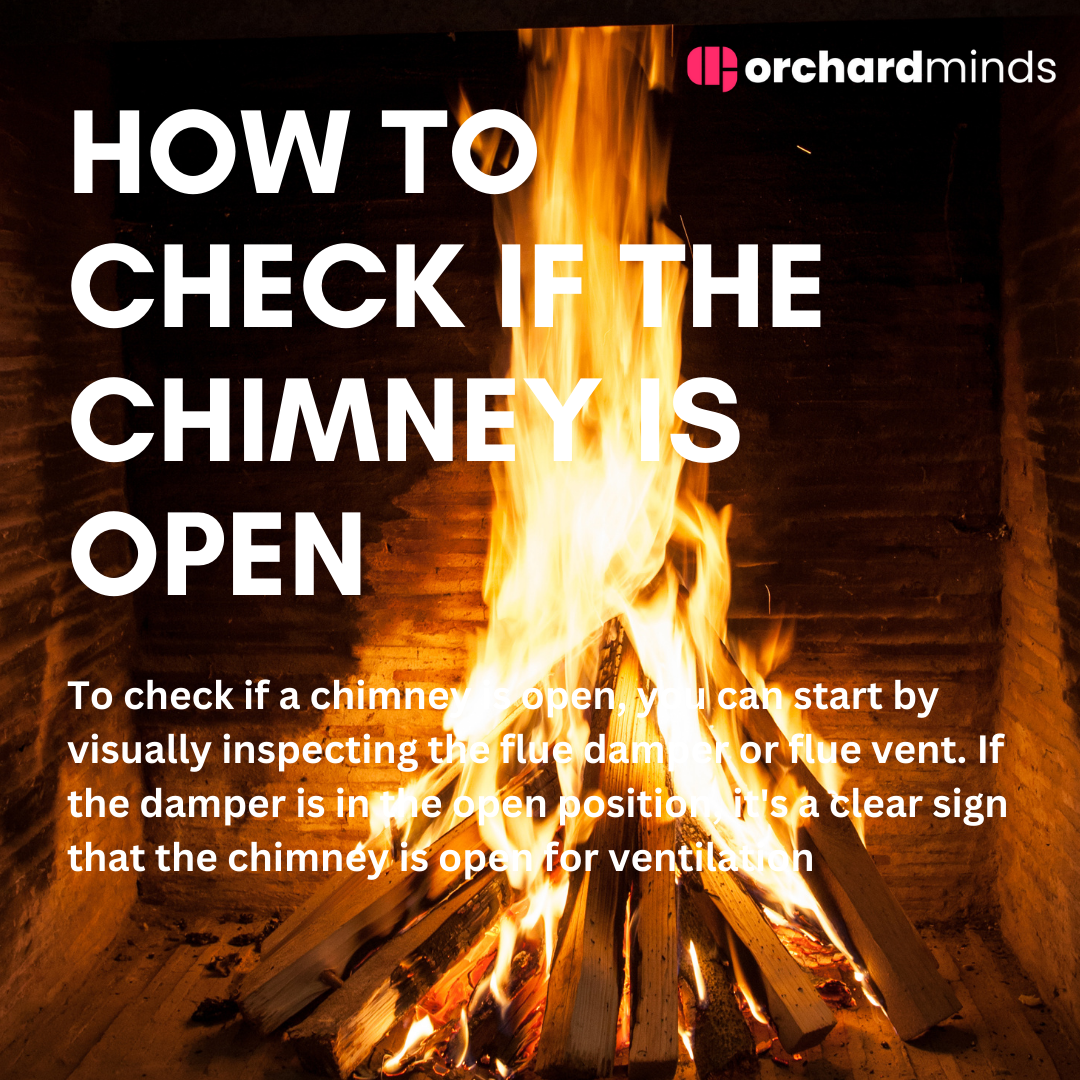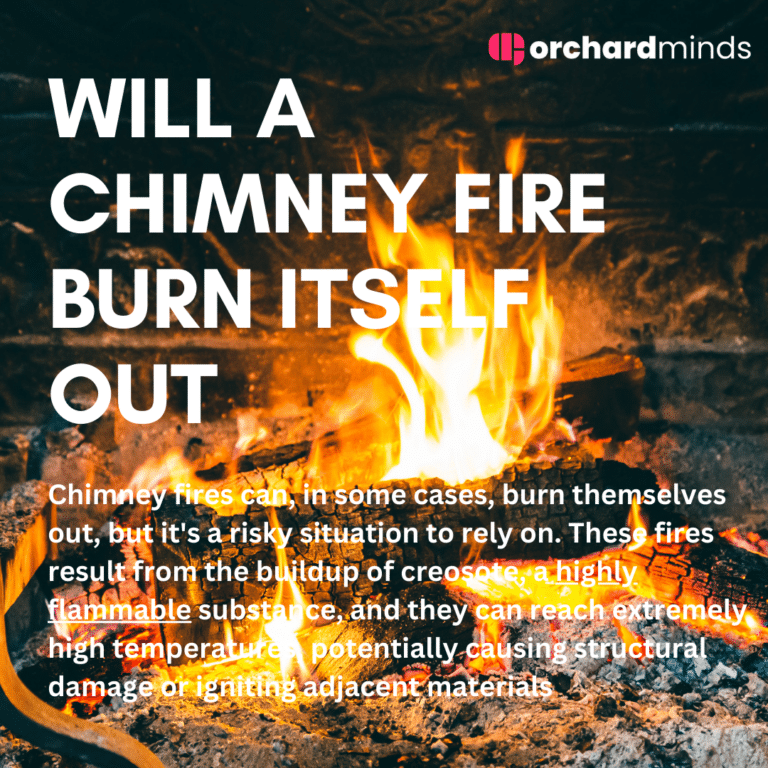How to check if the chimney is open ? To check if a chimney is open, you can start by visually inspecting the flue damper or flue vent. If the damper is in the open position, it’s a clear sign that the chimney is open for ventilation. Alternatively, you can use a flashlight to peer up into the chimney from the fireplace or stove. If you see daylight or an unobstructed path up the chimney, it’s likely open. Keep in mind that if you’re uncertain, it’s advisable to consult a professional chimney sweep or technician to ensure the chimney is safe and properly open for use.
How to Open Your Chimney Damper and How to Tell if It’s Open or Closed
- Visual Inspection: The most straightforward way to check the damper’s position is to visually inspect it. If the handle or lever is in an upright or outward position, it’s typically open. Conversely, if it’s in a downward or closed position, it’s closed.
- Light Test: Another method to determine if the damper is open is to use a flashlight. Shine a flashlight up the chimney from the fireplace. If you can see daylight or the sky through the chimney, it’s open. If the view is obstructed, it’s closed.
- Chimney Draft: When a fire is burning in the fireplace, you can feel the draft of air moving up the chimney. If the damper is open, you should notice a consistent upward draft. If it’s closed, you may feel restricted airflow or backdraft into the room.
- Hand Test: In some cases, you can also use a hand to touch the damper directly (after ensuring it’s not hot from a recent fire). If you can touch the damper, and it moves freely or feels open, it’s open. If it’s firmly in place, it’s closed.
- Temperature Difference: If the fireplace area becomes significantly colder than usual after a fire has been extinguished, it could indicate that the damper was left open, allowing cold air to enter.
What Type of Damper Do You Have?
Throat Damper
A throat damper is a common type of damper located just above the firebox inside the chimney. It’s typically controlled by a handle or lever that you can access from inside the fireplace. Throat dampers are designed to regulate the airflow in the chimney, allowing you to open and close them to control the draft. While they’re effective, they can be less airtight than top-mount dampers, potentially allowing some heat loss and cold air infiltration.
Top-Mount Damper
A top-mount damper, also known as a chimney cap damper, is located at the top of the chimney, right above the flue. It serves a dual purpose as both a damper and a protective cap. Top-mount dampers are highly efficient at sealing off the chimney when not in use, preventing heat loss, and keeping out rain, debris, and animals. They are typically operated with a cable system that runs down the flue and connects to a handle inside the fireplace, making them easy to open and close. This type of damper is known for its superior sealing capabilities and improved energy efficiency.
How to Know if the Damper is Open
Feel for a Draft
To check if your chimney damper is open, place your hand near the damper area and feel for any drafts of air. If you sense a draft, it’s an indication that the damper may be open or not sealing properly. If there’s no draft, it suggests the damper is likely closed.
Visually Check
A visual inspection involves looking directly at the damper or, if accessible, up into the chimney to see if the damper is in the open or closed position. The damper handle or lever’s position will clearly indicate whether it’s open (upright or outward) or closed (downward).
Check the Controls
If you have a damper control system, such as a cable or chain that runs from the damper to a handle inside the fireplace, visually check the position of the control. If it’s pulled or extended, the damper is likely to open. If it’s slack or retracted, the damper is probably closed. Ensure that the controls are functioning correctly to maintain proper damper operation.
Do Not Start a Fire in the Fireplace if You Are Not Sure the Damper is Open
Starting a fire in the fireplace when you’re unsure if the damper is open is a significant safety concern. An open damper is essential to allow the proper venting of smoke and harmful gases up the chimney. If the damper is closed, it can lead to smoke entering your home, potential carbon monoxide exposure, and even the risk of a chimney fire. To ensure safety, always confirm that the damper is fully open before igniting a fire in your fireplace or stove.
How to Check the Controls and Open a Damper
To check the controls and open a damper:
- Start by locating the damper handle or control mechanism, which is usually found inside the fireplace or stove. If it’s a cable or chain control system, gently pull or extend it, typically toward you or upward, to open the damper.
- If you have a lever-style control, move it to the open position.
- Visually inspect the damper to ensure it’s fully open and that there’s an unobstructed path up the chimney.
- Always confirm the damper’s proper operation before lighting a fire to ensure safe and efficient venting.
Different Types of Controls
There are various control mechanisms for fireplace dampers. The most common types include lever controls, which involve a handle or lever to open and close the damper, and cable or chain controls, where a cable or chain is pulled or extended to operate the damper. Some modern fireplaces also have remote-controlled dampers that allow you to adjust the damper position with a remote or smartphone app.
How to Open a Damper
To open a damper, you’ll typically either push, pull, or extend the handle, lever, or control mechanism associated with it. In the case of cable or chain controls, pulling or extending the cable will open the damper, while pushing or moving the lever to an upright or outward position will do the same. Make sure to confirm the damper is fully open and visually inspect the chimney to ensure it’s clear before starting a fire.
FAQs about how to check if the chimney is open
How do I visually inspect the chimney to see if it’s open?
To visually check if the chimney is open, look for the damper handle or control and see if it’s in the open position. You can also shine a flashlight up the chimney from the fireplace to ensure there’s an unobstructed path.
Can I use my hand to physically check the damper’s position?
It’s possible to use your hand to touch the damper, but only when it’s not hot from a recent fire. A damper that moves freely or feels open when touched indicates that it’s open. If it’s firmly in place, it’s likely closed.
What should I do if I can’t see daylight up the chimney during a visual check?
If you can’t see daylight or the chimney appears obstructed during a visual check, it’s best to consult a professional chimney sweep to inspect and address any issues with the damper or chimney.
Is it safe to use a fireplace if I’m uncertain about the damper’s position?
It’s not safe to use a fireplace if you’re unsure about the damper’s position. Always confirm that the damper is open before lighting a fire to ensure proper venting and safety.
How often should I check if the chimney damper is open?
It’s a good practice to check if the damper is open every time you plan to use your fireplace or stove. Regularly inspecting the damper ensures safe and efficient operation.




Leave a Comment